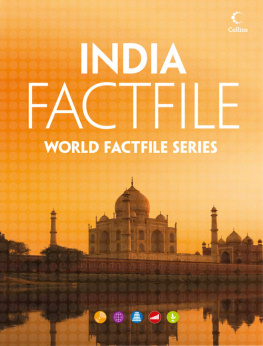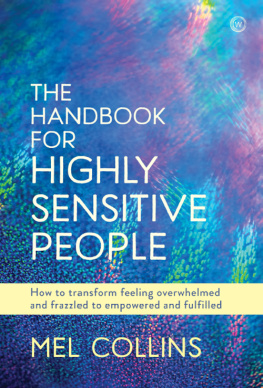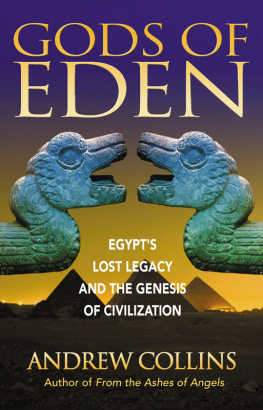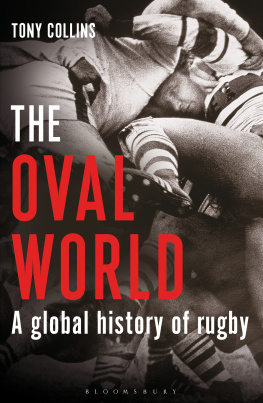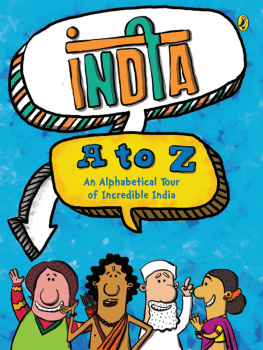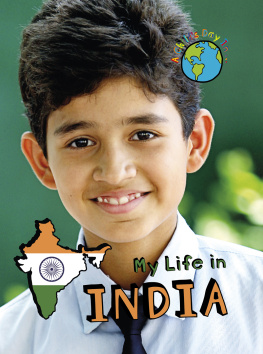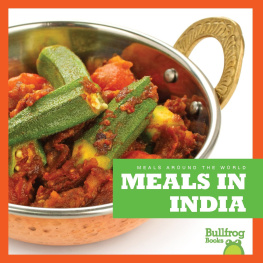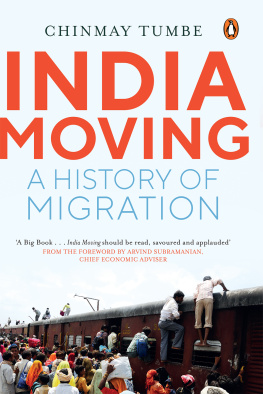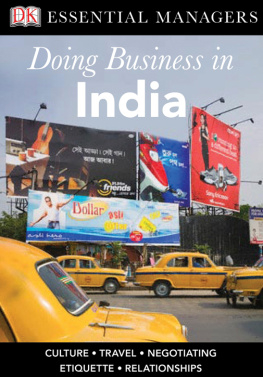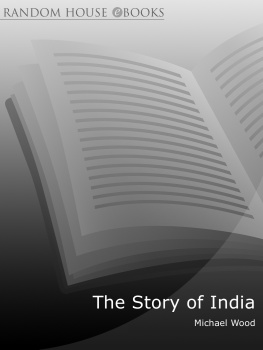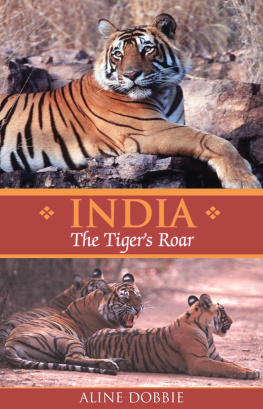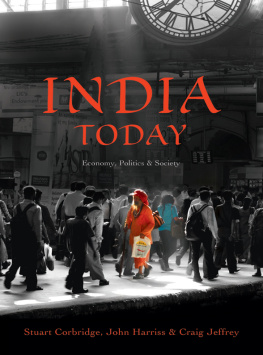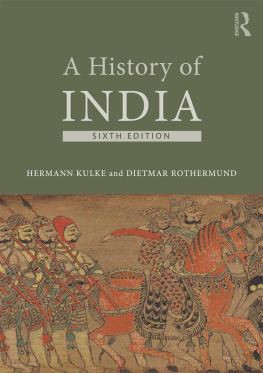
Australia
HarperCollins Publishers (Australia) Pty. Ltd.
25 Ryde Road (PO Box 321)
Pymble, NSW 2073, Australia
http://www.harpercollinsebooks.com.au
Canada
HarperCollins Canada
2 Bloor Street East - 20th Floor
Toronto, ON, M4W, 1A8, Canada
http://www.harpercollinsebooks.ca
New Zealand
HarperCollins Publishers (New Zealand) Limited
P.O. Box 1 Auckland,
New Zealand
http://www.harpercollinsebooks.co.nz
United Kingdom
HarperCollins Publishers Ltd.
77-85 Fulham Palace Road
London, W6 8JB, UK
http://www.harpercollinsebooks.co.uk
United States
HarperCollins Publishers Inc.
10 East 53rd Street
New York, NY 10022
http://www.harpercollinsebooks.com
Contents
Country Profile
Country overview
India occupies a prominent peninsula in southern Asia. The mountain ranges of the Himalaya, Karakoram and Hindu Kush form the northern border. The year divides into hot, monsoon and cooler seasons, the south being tropical. Rainfall is high in Assam. Over seventy per cent of the huge population the second largest in the world is rural, although Delhi, Mumbai (Bombay) and Kolkata (Calcutta) all rank among the ten largest cities in the world. Agriculture, forestry and fishing account for a quarter of national output and about two-thirds of employment. Tea, sugar, jute, cotton, tobacco, dairy products and hides are produced, as well as coal, oil and gas, iron, manganese, bauxite, diamonds and gold. Manufacturing includes chemicals, textiles, iron and steel, electrical goods and transport equipment; also software and pharmaceuticals. Exports include diamonds and jewellery as well as other manufactured goods. The UAE, USA and China are the main trading partners.
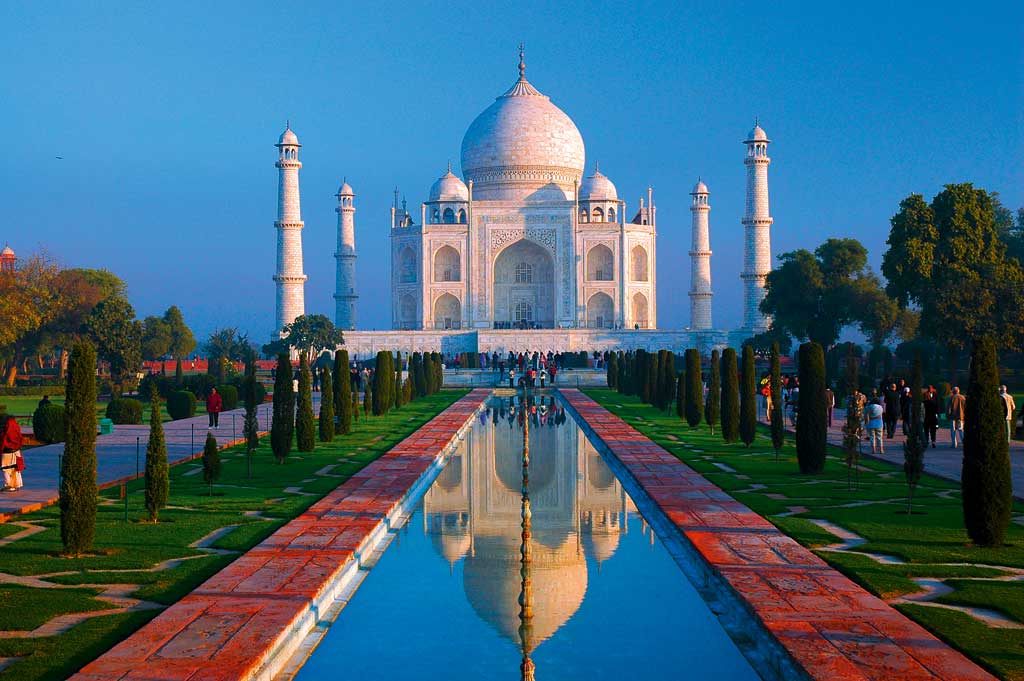
Taj Mahal, Agra, India
Flag
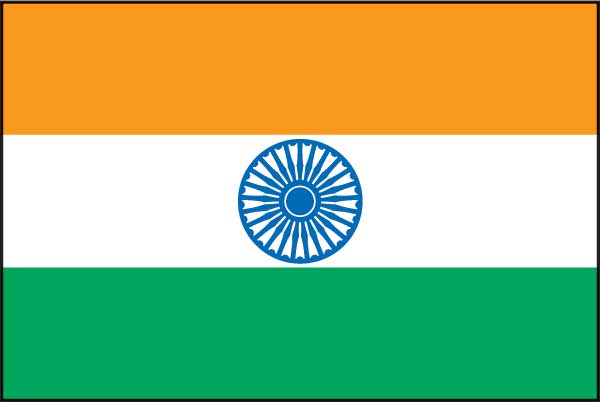
Country outline

Country map

Country profile
The south Asian country of India occupies a prominent peninsula that extends out into the Indian Ocean between the Arabian Sea and Bay of Bengal. The heart of the peninsula is the Deccan plateau, bordered on either side by ranges of hills, the Western Ghats and the lower Eastern Ghats, which fall away to narrow coastal plains. To the north is a broad plain, drained by the Indus, Ganges and Brahmaputra rivers and their tributaries. The plain is intensively farmed and is the most populous region. In the west is the Thar Desert. The mountain ranges of the Himalaya and the Karakoram form the northern border.
The climate shows marked seasonal variations; there is a hot season from March to June, a monsoon season from June to September or October, and a cold season from November to February. There are also wide regional variations due to the geographical and altitudinal extent of the country; rainfall ranges from very high in the northeast Assam region to negligible in the Thar Desert, and temperatures range from very cold in the Himalayan mountains to tropical heat over much of the south.
Risk of natural hazards is high. Torrential monsoon rains cause frequent and widespread flash floods, triggering landslides, destroying crops and infrastructure, killing many people and leaving millions homeless. Severe droughts that cause crop failure and famine are common. Earthquakes, some causing tsunamis, have resulted in thousands of deaths over the years; the third largest earthquake ever recorded was in the Indian Ocean in 2004.
Overall population density is high, with seven out of the ten most densely populated cities in the world located in India, including Delhi, Mumbai (Bombay) and Kolkata (Calcutta). Despite this, over seventy per cent of the huge population the second largest in the world is rural with much of the population living off farming at a subsistence level. The fertile Ganges Plain is Indias most populous region. The traditionally high population growth is still above average but has stabilized. Over eighty per cent of the population is Hindu, although at over ten per cent there is a significant Muslim minority. The infant mortality rate is high, and at less than two-thirds (fifty per cent for females), the literacy rate is low. Over a quarter of the population lives below the poverty line and several initiatives, including food subsidization, education, agricultural support and family planning, have been implemented to alleviate the situation. Reduced illiteracy and malnutrition rates are evidence of some success.
India has the second largest labour force in the world, two-thirds of which is employed in farming. Agriculture, forestry and fishing account for a quarter of national output and over half the land area is under cultivation, although much of this is given over to rice and wheat on a subsistence basis. Average farm size is low and although yields per unit area have increased with some improvements in irrigation and mechanization, they are still below the world average. India is the worlds largest producer of the staple crop of millet as well as pulses, jute, spices, ginger, and some tropical fruits including bananas, papayas, lemons, limes and mangoes. It is the second largest producer of tea, sugar cane, wheat and many vegetables. Livestock is reared mainly for dairy products and hides, and is an important source of livelihood for many Indian farmers in semi-arid regions where crop husbandry is not feasible. India is the largest producer of buffalo milk, and second largest producer of cow milk in the world. With extensive resources in the Indian Ocean, Indias fish catch is the second largest in the world.
Over seventy different minerals are mined including iron, manganese, bauxite, mica, limestone, diamonds and gold. There are major reserves of coal, oil and natural gas. India is the fifth highest consumer of oil in the world. The manufacturing sector is large and diverse. Textiles are a major source of employment, accounting for about a fifth of total manufacturing output, including silks, woollens, cotton, jute and ready-made clothing. The silk industry is one of the oldest industries in India, whilst large-scale garment manufacture has emerged more recently as India has proved a competitive supplier to world markets. The leather industry is also traditional, and now produces a range of goods from raw hides to fashionable shoes for export. Chemicals and chemical product industries include the manufacture of pharmaceuticals, man-made fibres, fertilizers, toiletries and paints. Gems and jewellery are a major contributor to foreign exchange earnings, with India as the world leader in diamond processing. Other important industries are iron and steel, food products, electrical goods, transport equipment and software.
India is the worlds fourth largest economy measured by GDP and since the early 1990s Indias integration into the global economy has increased. All the main manufactured products are exported, together with cut and polished diamonds, coloured gemstones, gold jewellery and leather products. The UAE, USA and China are the main trading partners.
Next page
